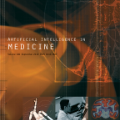Music, an integral part of our lives, which is not only a source of entertainment but plays an important role in mental well-being by impacting moods, emotions and other affective states. Music preferences and listening strategies have been shown to be associated with the psychological well-being of listeners including internalized symptomatology and depression. However, till date no studies exist that examine time-varying music consumption, in terms of acoustic content, and its association with users' well-being. In the current study, we aim at unearthing static and dynamic patterns prevalent in active listening behavior of individuals which may be used as indicators of risk for depression. Mental well-being scores and listening histories of 541 Last.fm users were examined. Static and dynamic acoustic and emotion-related features were extracted from each user's listening history and correlated with their mental well-being scores. Results revealed that individuals with greater depression risk resort to higher dependency on music with greater repetitiveness in their listening activity. Furthermore, the affinity of depressed individuals towards music that can be perceived as sad was found to be resistant to change over time. This study has large implications for future work in the area of assessing mental illness risk by exploiting digital footprints of users via online music streaming platforms.
翻译:音乐是我们生活中不可分割的一部分,音乐不仅是娱乐的源泉,而且通过影响情绪、情绪和其他情感状态,在心理健康中起着重要作用; 音乐偏好和听力策略与听众的心理健康有关,包括内化的症状学和抑郁症; 然而,迄今为止,还没有一项研究研究从声内容及其与用户福祉的关系方面审查时间变化的音乐消费及其与用户福祉的关系; 在本研究中,我们的目标是解开活跃的听觉行为中普遍存在的静态和动态模式,这些模式可能被用来作为抑郁症的风险指标; 审查了541 Last.fm使用者的心理健康评分和听觉史; 从每个用户的听觉历史中提取了静态和动态的声学和情感相关特征,并与他们的心理健康成绩相关; 研究结果显示,抑郁症患者在听力活动中可能更加依赖音乐; 此外,抑郁症患者对可被视为悲伤的音乐的亲近感与时间变化相抗。 这项研究对今后通过数字平台评估精神病风险的工作产生了巨大影响。





